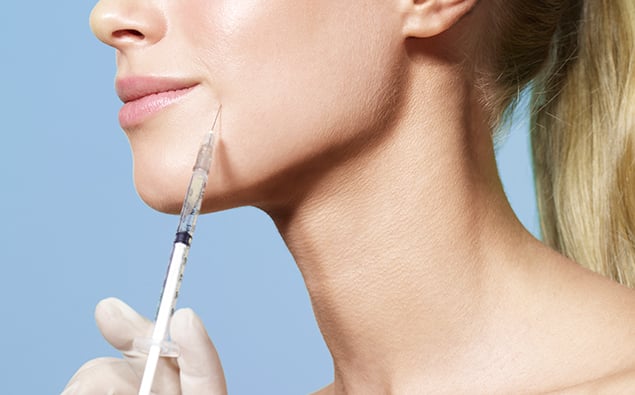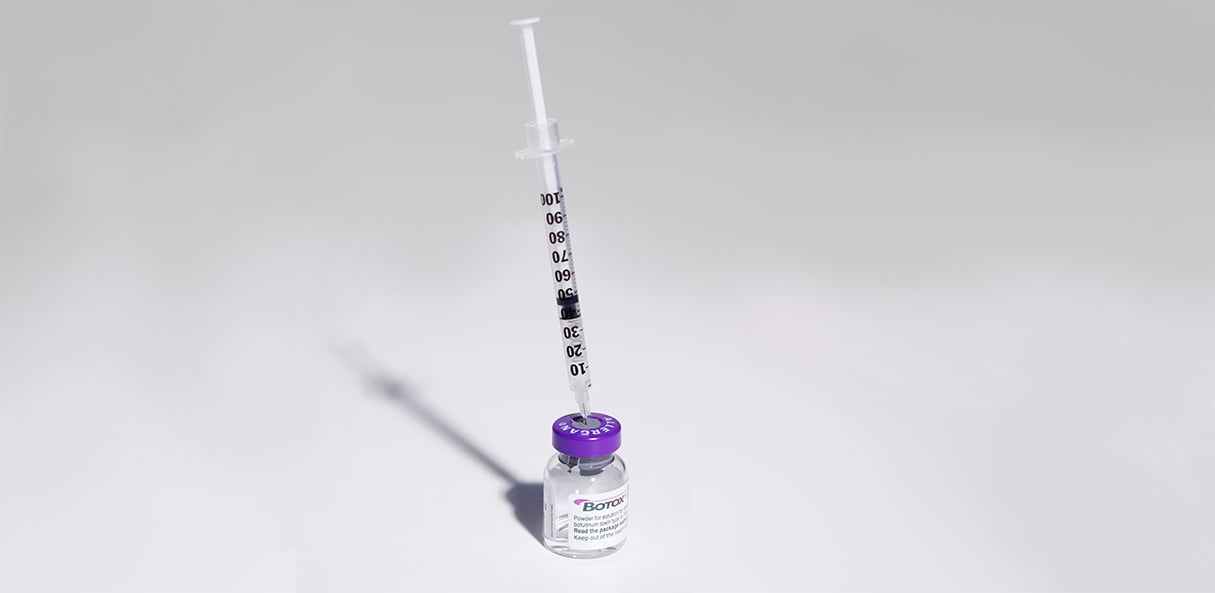Botox injections remain the most popular nonsurgical cosmetic procedure in the United States. In 2014, according to a survey conducted by the American Society of Plastic Surgeons, 6.7 million people had the procedure, an increase of 6 percent from 2013.
What a decade ago seemed scary and taboo—needles filled with botulinum toxin being poked into wrinkle-prone facial zones—is now widely accepted, and sometimes considered routine beauty maintenance. Yet with that growing comfort and popularity comes the expected jump onto the bandwagon, with an overwhelming number of practitioners now offering Botox.
So how do you know who’s actually good at wielding that tiny needle? Who should be trusted to inject your face, of all places, with stuff to paralyze muscles in an attempt to smooth out the signs of aging?
Just as we offered nine tips for finding the right person to cut into your face, here are five tips for choosing the right person to shoot it up with Botox.
Compare Prices, But Don’t Shop By Price Alone
“This isn’t the time for a Groupon,” says Dr. Melda Isaac, founder of MI Skin Dermatology Center in DC’s West End. “I have lost patients to a doctor offering a deal on Botox, but most have circled back as soon as they realize there is a difference—in placement, longevity, and skill.
“Millimeters make a difference,” says Isaac, who has been injecting patients with Botox since 1998. “An expert injector needs to look at the shape of a patient’s eye and eyebrow, for example, and match dosage and dilution for the desired effect. I inject a 55-year-old woman’s forehead differently than a woman in her early thirties.”
Most reputable practitioners have before-and-after images of patients they’ve injected. Take the time to check out the photos to make sure the doctor’s work looks natural to you.
It’s fine to price-shop to some extent, but know that you’ll pay more for injectables administered by more experienced doctors. Dr. Tina Alster was one of six physicians in the country chosen by Allergan, the maker of Botox, to conduct the initial Botox trials for FDA approval more than a decade ago. At her Washington Institute of Dermatologic Laser Surgery, which has locations in downtown DC and Chevy Chase, Botox is typically $600 to $850 per area. Elsewhere in Washington, Botox treatments may be advertised for $250. But be wary of a price that sounds too low, and expect to pay at least $400 an area for a seasoned injector.
Compare Units, Too—and Understand Your Number
You may come across practitioners who price Botox by the unit, meaning the number of units of botulinum toxin needed. Typically, the area between the eyebrows requires around 25 units, while horizontal forehead lines average between 14 and 18 and crow’s-feet 9 to 12 per eye. These are just guidelines, and you should talk to a doctor about the amounts he or she tends to use—because, in general, the greater the amount, the more chance you could end up with a frozen forehead like those too often spotted on The Real Housewives.
Dr. Elizabeth Tanzi, who spent several years at the Washington Institute of Dermatologic Laser Surgery before opening Capital Laser & Skin Care in Chevy Chase in September, says Botox and similar neurotoxins including Dysport and Xeomin can be administered in a lighter or more aggressive fashion, so talk with a doctor about the look you want. “Most women—and men—want a less aggressive approach,” Tanzi says. “Smaller amounts of strategically placed Botox deliver the best results, in my experience.”
At Blush Med Skincare in Bethesda, they call it Baby Botox. “It’s a technique using micro-injections of product, so we can eliminate fine lines yet retain some muscle movement,” says Dr. Arleen Lamba, the spa’s founder.
A good injector will keep your unit numbers on file for a future visit, so you can discuss whether you felt the amount was too much or not enough (and you still saw lines). There’s no such thing as one size fits all when it comes to Botox, which is why understanding injection quantities can make you a more educated consumer.

To Get Botox That Lasts, You Have to Ask a Hard Question
The longevity of Botox can also vary depending on who does the injections. Some practitioners, typically those offering too-good-to-be-true deals, tend to water down Botox more than a reputable physician will. There are guidelines to how many cc’s of saline should be used to dilute the toxin, which is standard procedure, but some injectors add a bit more to increase the number of injections they can get per vial. Unfortunately, patients won’t know if they’ve received over-diluted shots until the Botox begins to dissipate.
Administered properly, Botox typically wears off after three to four months. If you find wrinkles and movement reappearing sooner than three months, you may have received a batch with too much saline. Again, talking to a doctor before the procedure and asking about standard dilution can only increase your chances of a positive outcome.
Beware “Supervising Doctors”
As Botox boomed, so did the number of nurses, physician assistants, spas, and walk-in injection centers offering it. If a medical spa claims to have a “supervising doctor” on staff, make sure he or she is the one administering the injections. Often, the supervising doctor has little to do with the day-to-day operations at cosmetic-dermatology centers—so read the fine print. “In my office, only physicians perform cosmetic injections,” says Alster.
There’s a reason to insist on a physician: There are possible side effects to Botox, such as drooping eyelids or eyebrows. The complication, though rare, tends to occur when the practitioner is less experienced and isn’t as well versed in facial anatomy. In cases of severe eyelid drooping on one side, the injector has usually botched the placement of the Botox above the eyebrows. Sometimes this can be made better by placing more Botox to balance the mistake and lift the droop, but most times the patient must wait out the injection period.
There are tricky spots that can stump even the most established specialist. “Injecting the lower face, around the jawline or lips and mouth, is less forgiving than injecting the frown lines or the eyes,” says Isaac. “Fewer units are needed in these spots, but muscle attachments, and how muscles work together, are more intricate.”
Be sure that whomever you select has done a lot of injections in the part of the face you’re interested in treating.
Now Isn’t the Time to Be Shy
“Experience counts,” says Tanzi, “However, don’t discount good communication with your doctor.”
That means not only asking a lot of questions at consultations or visits but also being clear about what bothers you on your face and what you want to look like.
“I give the patient a mirror and let them talk,” says Lamba. “Some parts of the face can bother a patient more than others, and it’s those conversations that help us understand each separate case. That is just as important as the skill of the injector.”
Ask about pain, recovery, and follow-up visits. Botox can hurt: Although the needles are tiny and the pressure light, there’s still the pinching feeling of a sharp object injecting something into your skin. And even with the best physician, there can be light bruising afterward.
Doctors advise getting Botox a couple of weeks or more before an important event. Not only does that allow potential bruising to subside, but it also lets the neurotoxin take effect. A good physician should also encourage a patient to return for a follow-up appointment at the two-week point. “At that time,” Tanzi says, “we can check in to see if the patient is happy with the results or if there is a complication or concern.”
Kate Bennett writes about personalities, lifestyle trends, fashion, and beauty.
This article appears in our November 2015 issue of Washingtonian.










![Rockville-Town-Square-Library-View-[Credit-City-of-Rockville]-scaled-down - Washingtonian](https://www.washingtonian.com/wp-content/uploads/2024/02/Rockville-Town-Square-Library-View-Credit-City-of-Rockville-scaled-down-1500x1000.jpg)



